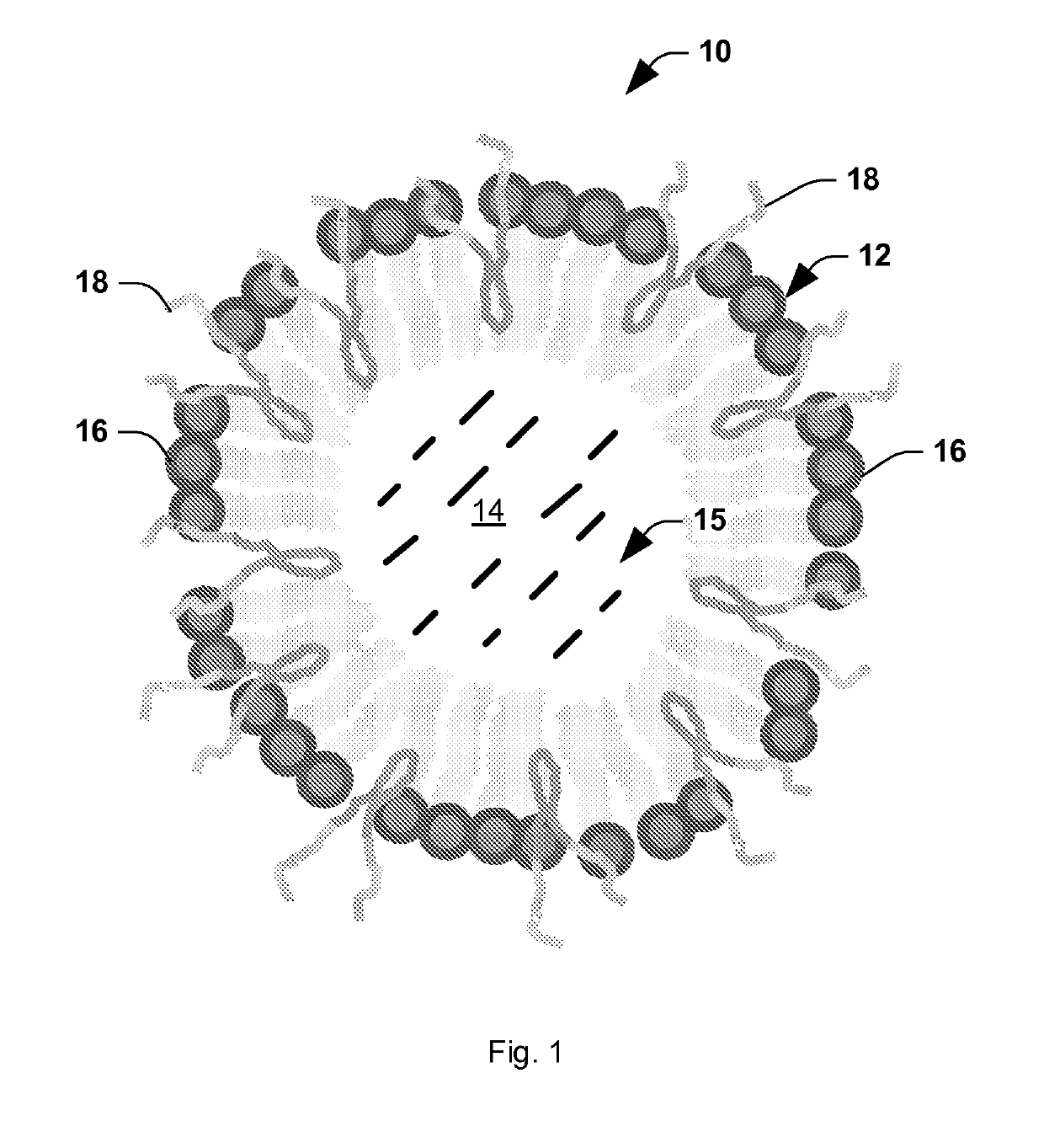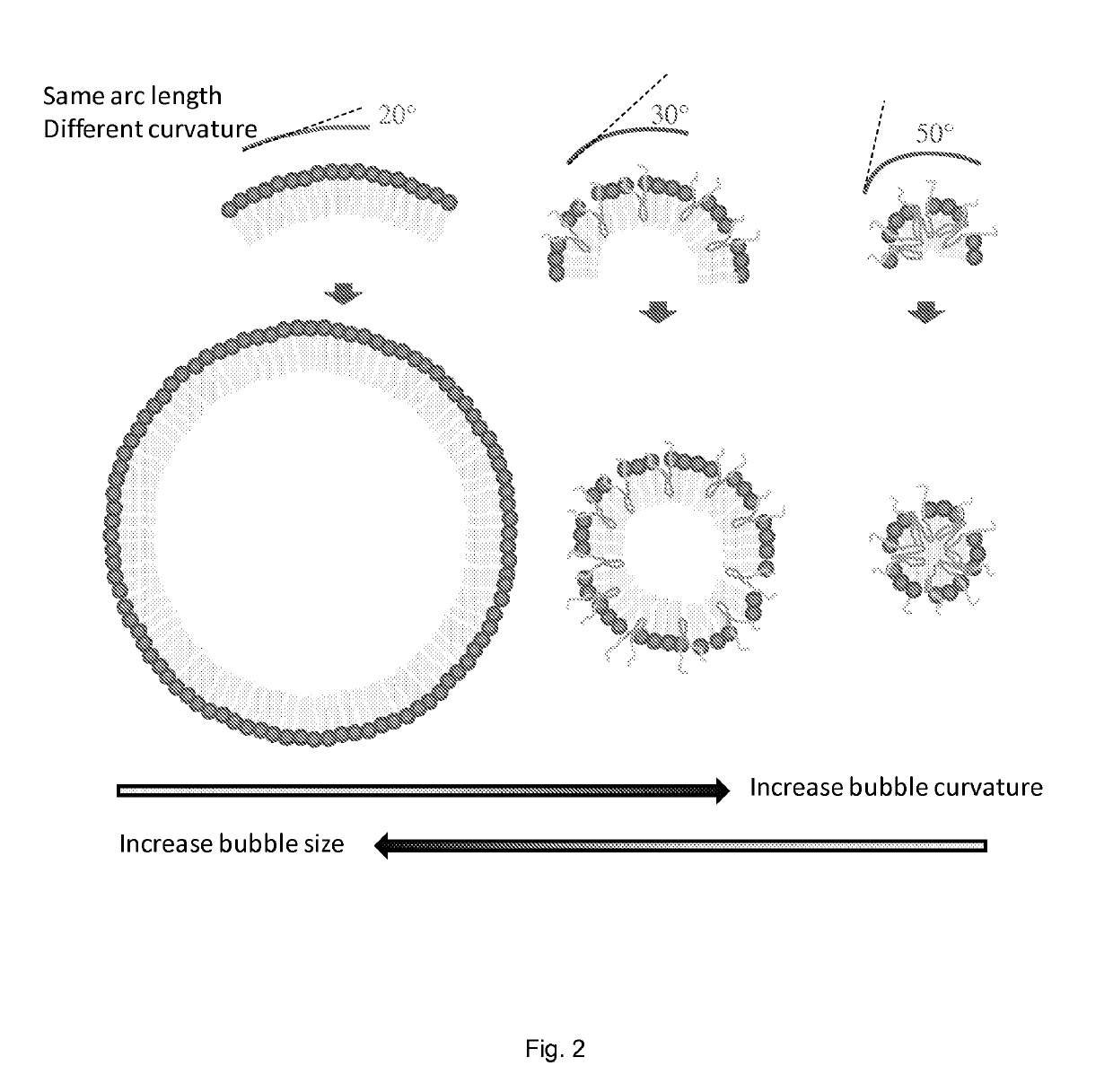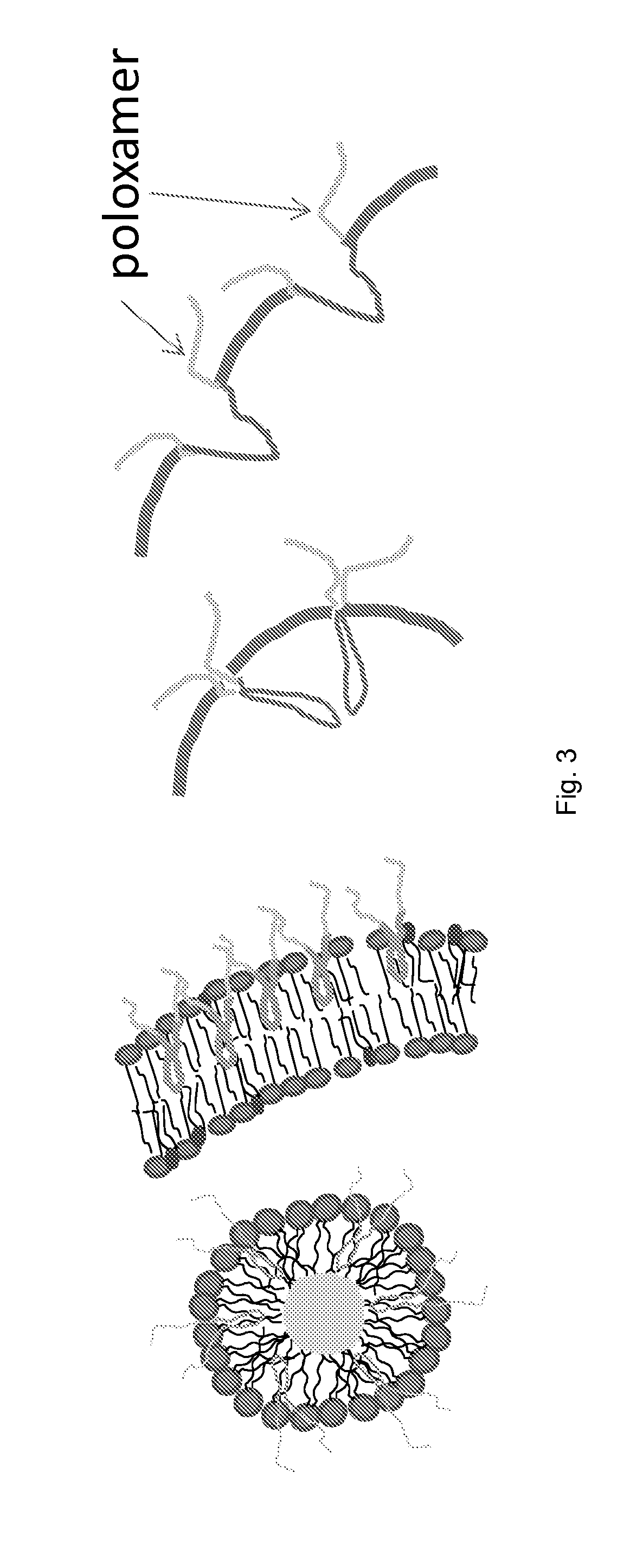Stabilized nanobubbles for diagnostic and therapeutic applications
a nanobubble and stabilization technology, applied in the field of diagnostic and therapeutic compositions, can solve the problems of limited application of microbubbles as carriers (e.g., in cancer therapy), reducing bubble yield and stability, and sample contamination, etc., to inhibit hsp expression and/or function, or to promote the effect of inhibition
- Summary
- Abstract
- Description
- Claims
- Application Information
AI Technical Summary
Benefits of technology
Problems solved by technology
Method used
Image
Examples
example 1
[0148]In this Example, we present a novel strategy for formulation of nano-sized, echogenic lipid bubbles by incorporating the surfactant Pluronic, a triblock copolymer of ethylene oxide co-propylene oxide coethylene oxide into the formulation. Five Pluronics (L31, L61, L81, L64 and P85) with a range of molecular weights (Mw: 1100 to 4600 Da) were incorporated into the lipid shell either before or after lipid film hydration and before addition of perfluorocarbon gas. Results demonstrate that Pluronic-lipid interactions lead to a significantly reduced bubble size. Among the tested formulations, bubbles made with Pluronic L61 were the smallest with a mean hydrodynamic diameter of 207.9±74.7 nm compared to the 880.9±127.6 nm control bubbles. Pluronic L81 also significantly reduced bubble size to 406.8±21.0 nm. We conclude that Pluronic is effective in lipid bubble size control, and Pluronic Mw, HLB, and Pluronic / lipid ratio are critical determinants of the bubble size. Most importantly...
example 2
[0178]In the previous Example, we demonstrated that Pluronics were effective in sensitizing cancer cells to low grade hyperthermia and reducing lipid shelled bubble size. In this Example, we aimed to identify the specific Pluronic structural properties that are critical to its cancer cell thermosensitizing ability (function 1) and its modulation of lipid bubble size (function 2). The initial results showed that both of these Pluronic functions are molecular weight (Mw) dependent through 2nd order polynomials. For thermosensitizing ability, two groups of Pluronic have demonstrated satisfactory potency under tested conditions. First group are those polymers with Mw≤2500 Da, HLB between 1-7 and having polypropylene chain length that are even multiples of the length of fatty acids tails (16 carbons) of the membrane phospholipids. The second group also comprised Pluronic with polyethylene chain length that are even multiples of the length of fatty acids that with 16 carbons, but with Mw≥...
example 3
[0186]Effective tumor-targeted drug delivery systems should be specific, minimally or non-invasive, and controllable. Traditional treatment methods generally lack one or more of those characteristics. This Example describes a system consisting of an in situ forming PLGA implant, lipid nanobubbles, and ultrasound radiation. In situ forming biodegradable polymer implants are injected as a solution of polymer, solvent, and drug, which solidifies in the tumor tissue through phase inversion. The period closely following injection is the burst period of polymer precipitation, which is followed by a more sustained drug release resulting from a combination of polymer degradation and drug diffusion. The controllability of these in situ forming implants could be improved by applying ultrasound irradiation, which has been shown to increase drug release from, and polymer degradation of, biodegradable polymer implants. Ultrasound-induced cavitation of biotinylated nanobubbles bonded to an avidin...
PUM
 Login to View More
Login to View More Abstract
Description
Claims
Application Information
 Login to View More
Login to View More - R&D
- Intellectual Property
- Life Sciences
- Materials
- Tech Scout
- Unparalleled Data Quality
- Higher Quality Content
- 60% Fewer Hallucinations
Browse by: Latest US Patents, China's latest patents, Technical Efficacy Thesaurus, Application Domain, Technology Topic, Popular Technical Reports.
© 2025 PatSnap. All rights reserved.Legal|Privacy policy|Modern Slavery Act Transparency Statement|Sitemap|About US| Contact US: help@patsnap.com



